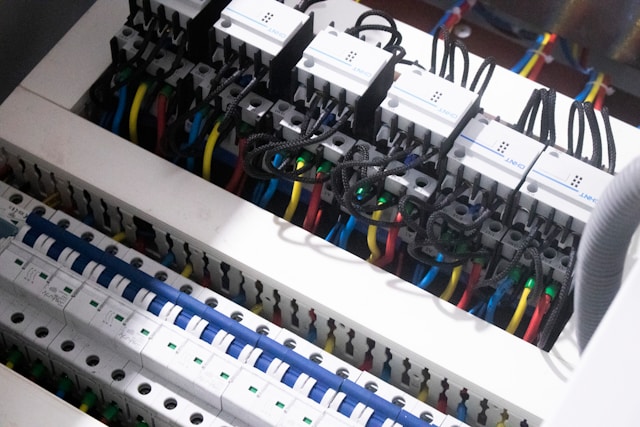
How Licensed Electrical Contractors Ensure Compliance With Building Codes
Electrical building codes provide minimum safety standards and guidelines that must be followed during installations, repairs, and maintenance. Following these codes minimizes the risk of safety issues and legal liabilities.
Code compliance also gives occupants confidence that the structure was built with their health and well-being in mind and can endure natural disasters. Licensed electrical contractors ensure compliance with local and state regulations by working closely with inspectors.
Wiring
Electrical wiring is an essential part of ensuring building compliance. The code requires capacity planning based on estimated electrical loads, appropriate wire sizes, and proper grounding and bonding to minimize risk and facilitate fault detection and dissipation.
Sheathing and insulation must be protected from damage by mechanical forces, such as penetration by nails, hammers, or other tools. Special consideration may be required for cables in areas with frequent splashing or immersion (AK2).
Achieving and maintaining compliance with electrical codes is a challenging task. It is best to work with licensed electricians and professionals like the licensed electrical contractor in Fort Smith AR, who are experienced in code compliance to ensure accurate installation and adherence to regulations. Keeping detailed records and conducting regular inspections can help identify potential problems or issues early on, making it easier to fix them before they become serious safety risks.
Planning and Design
Electrical codes are regularly updated to address new technologies and safety requirements. It is essential for building contractors to understand these changes and keep current on them to ensure compliance with the most recent revisions.
Code upgrades are based on a consensus of improvements desired by stakeholders, including consumers and industry professionals. The democratic process that produces these improvements also considers societal benefits and the interests of construction suppliers and builders/contractors who must remain competitive in the global market.
Adherence to up-to-date codes helps build quality in buildings acceptable to many constituents, including owners, insurers, investors, and taxpayers. Codes requiring that buildings be designed for hurricanes, earthquakes, and fires protect occupants from life-threatening conditions. Codes that facilitate the use of renewable energy reduce a building’s reliance on fossil fuels and, therefore, its contribution to climate change.
Permits
Code compliance is an integral part of any construction project. It ensures occupant safety, legal compliance, and operational efficiency. It is also essential for avoiding costly mistakes and ensuring a positive business reputation.
Codes regulate electrical installation, alterations, and repairs within buildings and commercial structures. They establish rules for minimum distances between wires and equipment, preventing arcing that can cause fires or electrocution. They also set grounding and bonding requirements to protect against lightning strikes, stabilize electrical voltages, and dissipate fault currents.
Creating codes is collaborative and takes input from a broad range of experts. This bottom-up approach allows for a better understanding of new technologies and improved construction practices. This results in more efficient, safer, and cost-effective models for local jurisdictions to establish building standards.
Installation
Electrical code compliance is essential for building safety, legal compliance, energy efficiency, and market value. Taking the proper steps to ensure compliance with these critical regulations can help avoid costly fines, project delays, and even shutdowns.
Licensed electrical contractors are well-versed in local, state, and national electrical codes and regulations. They use these codes to guide their work and ensure that all installation projects meet minimum safety standards. This includes using appropriate wire sizes, junction boxes, and grounding systems to minimize the risk of fires and electrical shock. It also means using high-quality materials that are durable and dependable.
Are you interested in pursuing a stimulating career as a licensed electrical contractor? Seeking out licensing exam prep resources is a significant first step to getting started.
Testing
Compliance with electrical building codes is vital for safety, legal requirements, and energy efficiency. Seeking professional assistance, following best practices, and staying updated are keys to success.
Electrical codes help to reduce the risk of fires caused by faulty wiring or other malfunctions, preserving lives and property. They also establish minimum distances between wires to prevent overheating or arcing. Codes also include grounding and bonding provisions to safeguard against electrical shocks and provide safe dissipation of fault currents.
Building codes are a crucial tool for builders and suppliers in developing new products for the marketplace. Their three-year update cycle helps to ensure that they reflect the latest advancements in technology and science. Consumers gain from these changes as well. Their homes are safer, better insulated, and more resistant to extreme weather.





